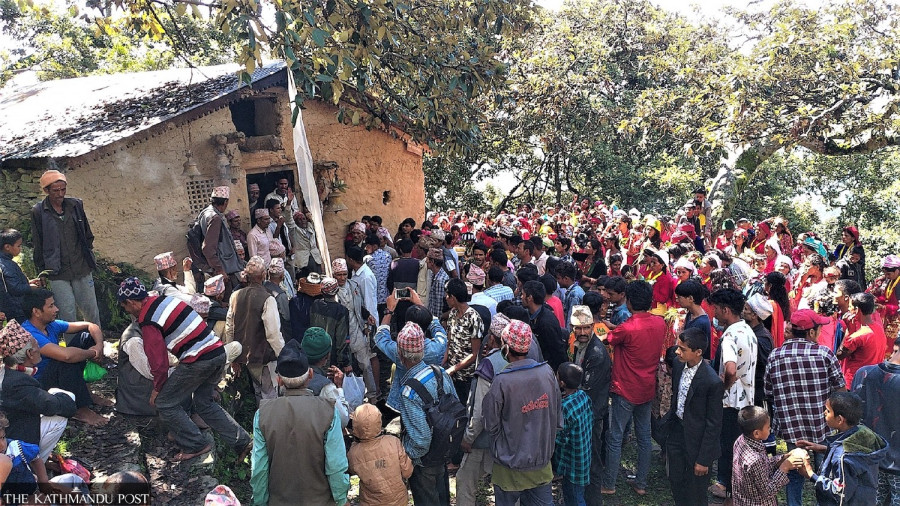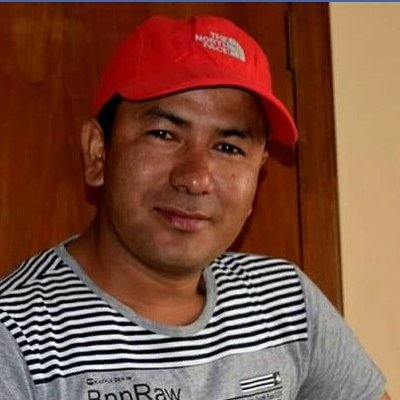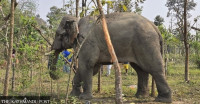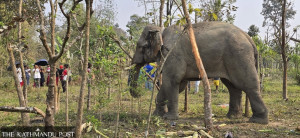Sudurpaschim Province
Surma Sarovar sees thousands of devotees for Birijaat Mela despite pandemic
At least 8,000 individuals visited Surma Sarovar Lake in the last two weeks, according to Surma Rural Municipality office.
Basant Pratap Singh
Health officials in Bajhang have rung the warning bells for the spread of coronavirus in the district given the recent influx of people to Surma Sarovar Lake to observe the annual festival of Birijaat Mela in the middle of a still-raging pandemic.
The five-day affair started on August 18 and culminated on August 22.
“The preparations for the festival started 15 days prior to the festival. The footfall in Chainpur, the district headquarters, alone was in the thousands in the last two weeks of those en route to Surma Sarovar Lake,” said Narayan Joshi, information officer at Bajhang District Health Office in Jaya Prithvi Municipality.
“Gathering in one place to celebrate a festival in times like these is dangerous. The chances of a virus outbreak are still high but neither the devotees nor the local administration seemed keen on preventing the spread of the virus,” he said.
According to Surma Rural Municipality Chairman Nar Bahadur Bohora, at least 8,000 individuals visited Surma Sarovar Lake in the last two weeks.
The residents of Darchula and Bajhang districts take the annual pilgrimage to the holy lake, also known as Mini Kailash among Hindus, towards the beginning of August until the middle of the month.
According to devotees, they must make the journey on bare feet and abstain from worldly comforts, even going to lengths such as refusing umbrellas to shelter from the rain. Bajhang experiences moderate to heavy rainfall during the monsoon season.
Devotees from Bajhang and Darchula converge at Biruodar, a cave in Surma Rural Municipality, and serenade the Surma goddess with songs of piety while they make their way towards the holy lake.
Although the second wave of Covid-19 infections, which began in April, wreaked havoc across the nation with thousands of hospitalisations and over 6,000 deaths recorded from April onward, people seem to be disregarding all health safety protocols in their efforts to reach the lake to pay homage to their deity.
Despite the health safety warnings, both the local and district authorities failed to set up mechanisms to monitor the safety protocols for the passing pilgrims merging in one location in huge numbers.
Chairman Nar Bahadur Bohora attributes their lack of control over the situation to the sheer volume of people involved in the pilgrimage.
“There were so many people that it became impossible to keep track. It was beyond our control to make people follow health safety protocols,” he said.
Mangal Khadka, a resident of Khaptadchhanna Rural Municipality, says the influx of people from outside the rural municipality has put the local people at risk of Covid-19 infection.
“The market places are crowded and no one is following safety measures,” said Khadka. “Although the police had closed shops and businesses after 8pm in Chainpur, there was an overwhelming crowd during the day. If this is to continue, the infection rate will rise again and we will be confined inside our homes.”
Health officials worry that the negligence of the concerned authorities in monitoring the movement of people during the pandemic could give rise to the number of Covid-19 cases in the coming weeks.
“People, both local and those from outside the district, are behaving like there is no pandemic,” said Naresh Khadka, laboratory in-charge at the Bajhang District Hospital.
“The number of antigen and RT-PCR tests being conducted has decreased in the past month, which means there is no actual data to gauge the extent of the virus spread,” he said. “People have stopped getting tested. It could be vaccine confidence or the fear of being marked as a coronavirus patient.”
According to the District Health Office, as of the third week of August, 35,112 individuals have so far taken a single dose of Covid-19 vaccine in the district while 5,121 have received both doses.
According to Khadka, the laboratory in-charge, they received only four samples for Covid-19 testing in the third week of July. “Since then we haven’t received a single sample for testing,” he said.
The total number of coronavirus cases in Bajhang is 1,509 with 20 deaths while the active cases stand at zero, the data of the District Health Office showed.
“There are zero active cases in the district but that can be attributed to the fact that hardly any tests are being conducted,” he said. “The local authorities should increase testing in the district to decrease the risk of Covid-19 infections.”
Health officials say that with almost no testing being conducted and the relative infection numbers reaching nil, people have become careless and complacent in following safety protocols.
They advise prevention of all large gatherings such as the one recently witnessed in Bajhang to ensure health safety of the locals and visitors.
Birendra Bohora of Surma Rural Municipality, who is at the five-day annual festival along with thousands others, is not worried about the ongoing pandemic. Bohora has not been taking any precautions such as wearing a mask or maintaining social distancing.
"The pandemic is not serious in our area so I don't think there is a need to wear a mask,” said Bohora. "The festival comes once a year and like me, many are here to pay respect to the deity even during a pandemic. We trust in our deity to keep us safe."




 10.12°C Kathmandu
10.12°C Kathmandu













%20(1).jpg&w=300&height=200)
